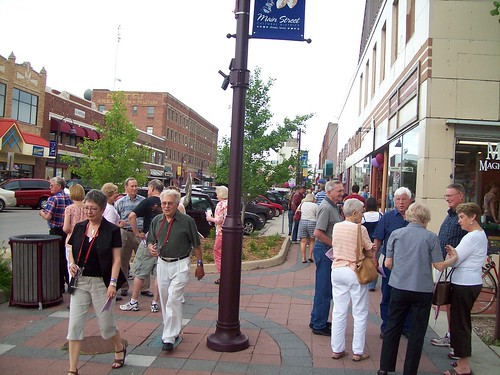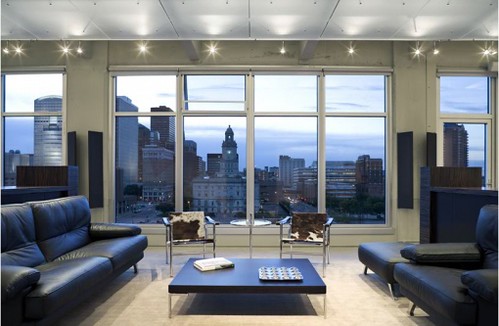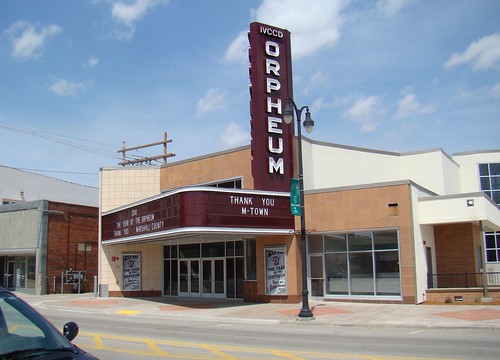National Main Street conference starts tomorrow in Des Moines Iowa

Streetscape, Ames, Iowa. Photo: Iowa Main Street program.
It can be expensive when you pay for it yourself, but I highly recommend if you can manage to do so, attending national conferences such as the National Main Street conference, the National Trust for Historic Preservation (this year it's in Buffalo, NY from October 19th-22nd), state preservation conferences, or the American Planning Association and American Society of Landscape Architects (this year it's in San Diego, from October 30th to November 2nd) conferences. All of these conferences move to places around the country, so they come past you at some point, regardless of where you live.
You get an opportunity to learn a lot very quickly, both through conference sessions and tours. It's always good to see other places and learn from them. I don't think I've ever been on a "bad" tour, but I have been on some that were much better than others because the tour leaders were so well organized. It's a struggle to balance tours and missing sessions. Best is a mix of both.
In fact I have been thinking about Houma, Louisiana this week, because that was one of the places I visited as part of a tour of the Atchafalaya National Heritage Area, as part of my attending the Main Street conference in 2006 in New Orleans, and Houma is one of the cities that may be flooded out by the diversion of the Mississippi River into the Atchafalaya River flood plain. (I remember the flood wall, and visiting the second floor loft of the people who owned the store beneath it...)
Anyway, this year the National Main Street Conference is in Des Moines, Iowa, starting tomorrow and going through May 25th. Des Moines was chosen because the city “exemplifies a modern city that has incorporated historic preservation into its downtown development efforts.”
For the most part, historic preservation based efforts are the only sustainable strategy for neighborhood and downtown revitalization programs, which is something you get a handle on by attending these conferences in different cities around the country. (Main Street programs tend to operate in smaller places, including neighborhood commercial districts, while "business improvement districts" tend to operate in larger cities, including downtowns--for example, DC has a number of BIDs across the city, as well as Main Street programs. So does Baltimore. NYC has many BIDs and no Main Street programs. Boston has more Main Street programs than any other U.S. city. San Diego has both BIDs and Main Street programs, but a number of the BIDs use the Main Street model to organize their efforts.)
Apparently, one key factor in Des Moines' success is a number of pedestrian-friendly neighborhoods close to downtown, including the historic East Village neighborhood at the foot of the Iowa State Capitol, and Sherman Hill, a neighborhood of Victorian homes, as well the addition of housing opportunities downtown proper.

Substance Architecture designed the Jirsa Loft in downtown Des Moines, Iowa. This 2,700 square foot loft apartment in downtown Des Moines was designed for a single doctor interested in fine art and urban living. For more see "the entry from the Karmatrendz blog.
This is important if you want to attract and retain residents--having historic building stock dominated neighborhoods close to downtowns makes walkability key because most cities don't have fixed rail transit service, they rely on bus-based transit service which isn't attractive to most demographics other than the transit-dependent.
Like all of the Main Street conferences, it will be a mix of programs and tours of bigger cities like Des Moines, college towns including Ames, home of the Iowa State University, and smaller towns. Tours outside the capital city include Mason City, home to the only remaining hotel designed by Frank Lloyd Wright; and Marshalltown, where visitors can see the more than $50 million investment in its downtown, which includes a LEED-certified library, Carnegie building and the recently re-opened Orpheum Theater Center.

Opheum Theater Center, Marshalltown, Iowa. Photo: Iowa Main Street.
Unfortunately, there is a sense within the Main Street movement that programs in big cities can't learn from small towns. I have always that that was a very narrow-minded belief. For one, a commercial district revitalization program doesn't cover an entire city, but a district or neighborhood, and at that scale, most places function similarly. There might be more poverty, crime, or ethnic and racial diversity in a big city, but otherwise the places can be compared.
In fact, some of the best lessons I have received about how to approach revitalization have come from small places, such as Littleton, NH, Libertyville, IL and the experiences of running programs across the State of Kentucky in large and small towns as synthesized by the Kentucky Main Street program.
Iowa has 45 active Main Street Iowa communities and Main Street communities are always great places to live, do business and visit. Iowa’s program has a decidedly rural flavor, with the most small town programs of any state’s Main Street program. Iowa's state-wide Main Street program is celebrating its 25th anniversary this year, Iowa’s Main Street program is one of the country's longest-running state-level programs and has a very high retention rate. Iowa’s program has helped spur more than $1 billion in private investment in its 25-year history and created more than 10,700 jobs.
(DC keeps trying to defund its programs, and more than half of the original 12 programs have disbanded--one actually still operates, in Mount Pleasant, but without DC sanction, and the Main Street Takoma program designated by the State of Maryland also serves the DC part of Takoma.)
Outside the capital city, an educational tour is available in Mason City, home to the only remaining hotel designed by Frank Lloyd Wright. In Marshalltown, visitors can see the more than $50 million investment in its downtown, which includes a LEED-certified library, Carnegie building and the recently re-opened Orpheum Theater Center.



0 Comments:
Post a Comment
<< Home